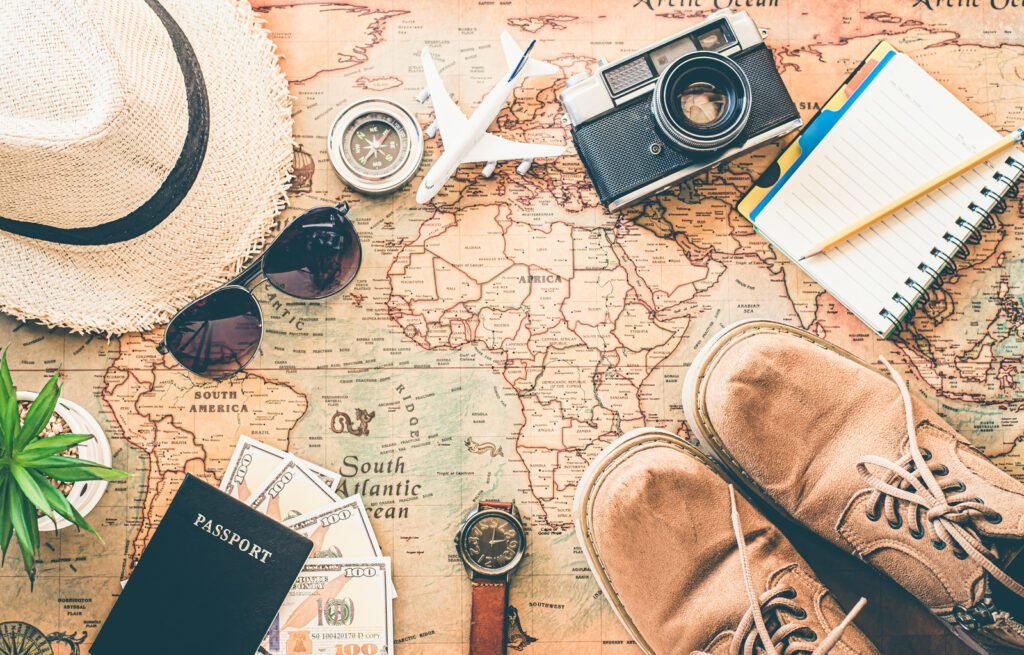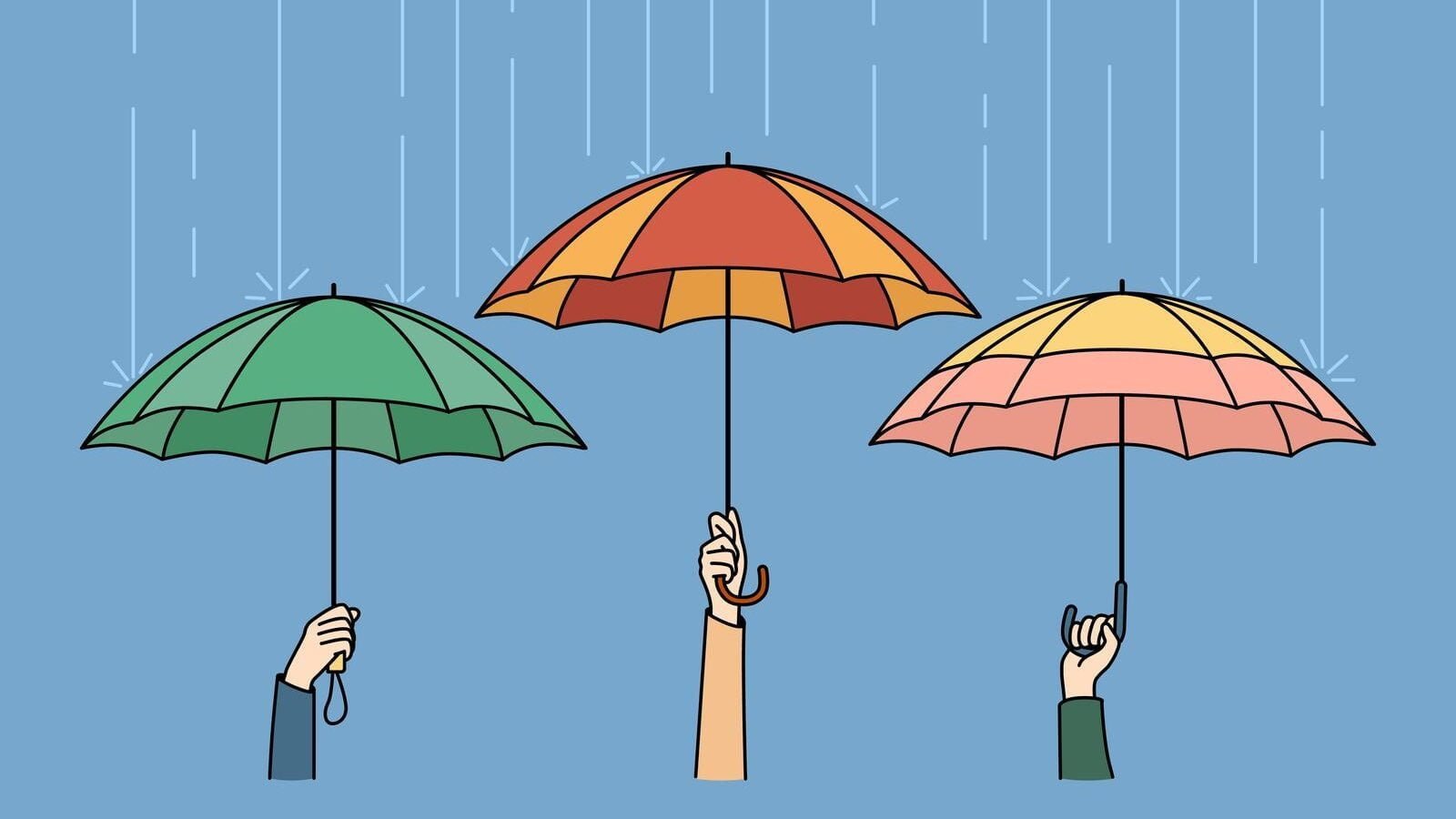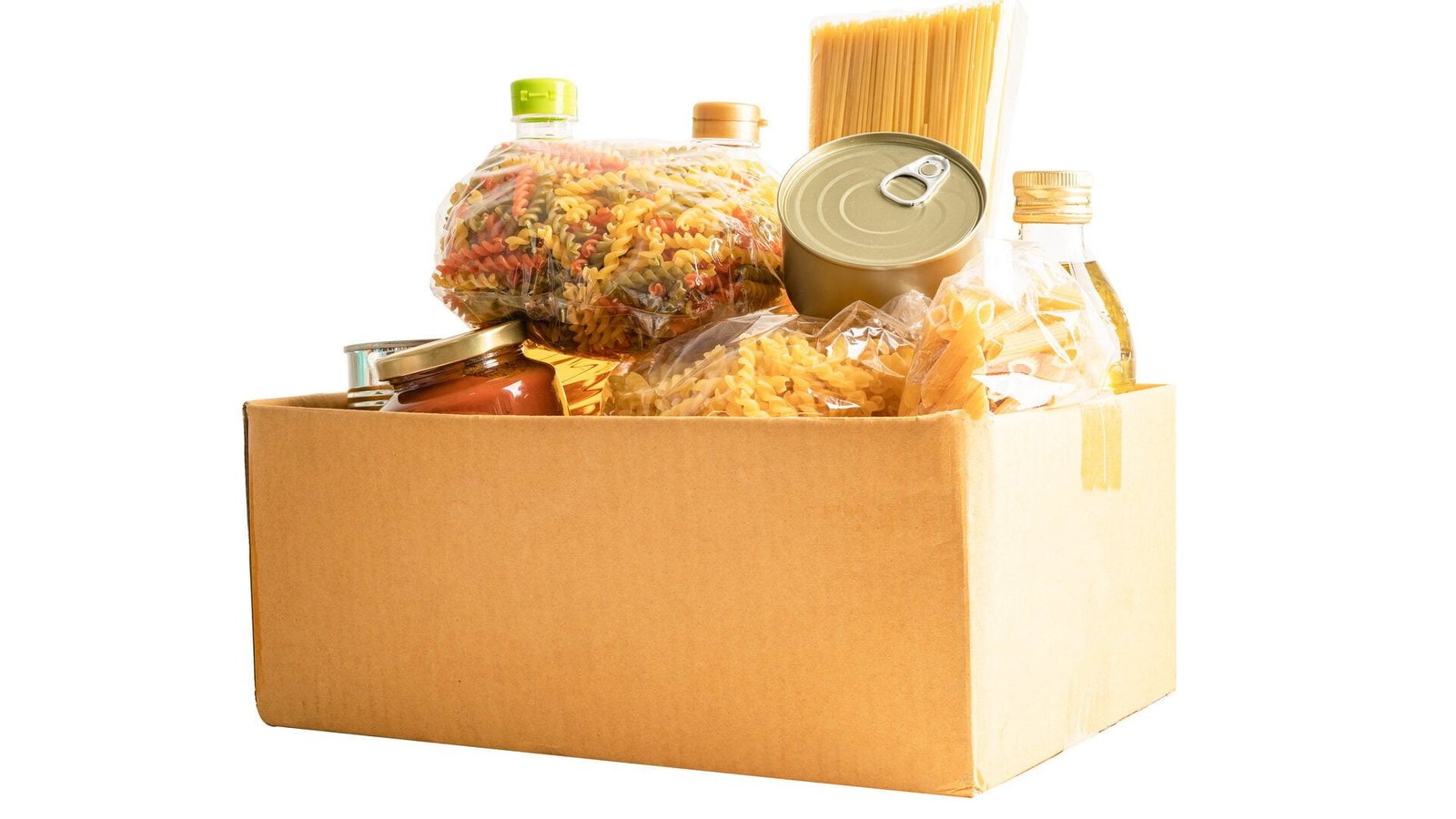Introduction
Over the years, camping has become a cherished outdoor activity that many people enjoy. Escaping the hustle and bustle of daily life, breathing in fresh air, and immersing oneself in the beauty of nature are just a few reasons why camping is an attractive option for outdoor enthusiasts.
Whether you are seeking solitude or looking to reconnect with loved ones, camping offers a unique experience that rejuvenates the mind, body, and soul. Among the numerous benefits of camping is its ability to provide an escape from modern technology.
In today’s digital era, where screens dominate our lives, camping offers an opportunity to disconnect and embrace simplicity. Imagine trading in your smartphone for stargazing or swapping social media scrolling for hiking through breathtaking landscapes.
Camping allows for uninterrupted moments of introspection and self-discovery. However, it is important to note that while camping can be invigorating and liberating, proper planning is vital to ensuring a successful trip.
Many beginners underestimate the importance of planning and preparation when venturing into the wilderness. Adequate preparation not only enhances safety but also maximises enjoyment during your camping expedition.
The Importance of Proper Planning

Planning serves as an essential foundation for any successful venture, including camping trips. Without proper planning, potential hurdles such as inadequate gear or unfavourable weather conditions may hinder your overall experience.
1. Weather Considerations: Understanding weather patterns plays a crucial role in planning your camping trip effectively. Unpredictable weather changes can significantly impact safety and comfort levels during your adventure.
Prior research on climate trends specific to your chosen location can help you determine suitable times to camp and plan accordingly. 2. Reservation and Location Selection: Securing campground reservations ahead of time guarantees availability at popular destinations during peak seasons or holidays, when campsites tend to fill up quickly.
Researching different camping locations is essential, as it allows you to find the perfect setting that aligns with your preferences and desired activities. 3. Gear and Equipment: Packing the right gear is vital for a successful camping trip.
Ensure you have appropriate tents, sleeping bags, cooking utensils, camp chairs, and other essentials tailored to your needs and the expected weather conditions. A well-stocked supply of emergency equipment, such as a first aid kit and communication devices, should always be included.
4. Meal Planning: Proper meal planning not only ensures you have enough food but also helps prevent potential food-related issues during your trip. Take into account dietary restrictions, consider non-perishable options for extended stays, and plan meals that are easy to prepare in an outdoor setting.
5. Safety Measures: Being cautious of safety guidelines is paramount when heading into nature’s embrace. Familiarise yourself with campground rules regarding fire safety protocols, quiet hours, wildlife precautions, and any other regulations specific to the location you choose.
Camping offers a unique opportunity to detach from everyday life while immersing oneself in nature’s wonders. The popularity of camping stems from its ability to provide solace away from technology-driven routines while offering countless benefits for physical and mental well-being.
However, ensuring a successful camping experience requires proper planning in terms of weather considerations, location selection, gear preparation, meal planning, and adherence to safety measures. By meticulously organising these aspects beforehand, you can embark on an unforgettable adventure that rejuvenates both body and soul.
Selecting the Perfect Location
Exploring Different Types of Camping Sites
When planning a camping trip, one of the first decisions you’ll need to make is selecting the perfect location. There are various types of camping sites to consider, each offering unique experiences and amenities.
National parks are ideal for nature enthusiasts, offering stunning landscapes, hiking trails, and opportunities for wildlife sightings. Private campgrounds provide a range of facilities like showers, electricity hookups, and communal areas for socialising.
State parks often strike a balance between natural beauty and modern conveniences. Consider factors such as proximity to your home or desired destination when choosing a location.
If you prefer convenience or have limited time available for travel, opt for a site closer to home. However, if you’re seeking an adventure and have ample time on your hands, exploring farther destinations can be rewarding.
Factors to Consider: Proximity, Amenities, and Desired Activities
Proximity is an essential consideration when selecting a camping site. Determine how far you’re willing to travel and check if there are any specific attractions or landmarks in the vicinity that pique your interest. Amenities play a significant role in determining your comfort level during the trip.
Decide what amenities are essential for you—do you require access to clean washrooms and showers? Are electrical hookups necessary?
Or are you looking for a more primitive experience without these facilities? Furthermore, consider the activities available at the campground or nearby areas.
If hiking is your passion, look for sites with well-maintained trails or access to nearby national parks known for their scenic routes. On the other hand, if water-based activities like fishing or kayaking excite you more, campsites near lakes or rivers will be ideal.
Researching Weather Conditions and Seasons

The Impact of Weather on the Camping Experience
Weather conditions can significantly impact the success and enjoyment of your camping trip. Imagine setting up camp during a heavy rainstorm or enduring extremely hot temperatures without any shade. Understanding how weather affects your experience will help you plan accordingly and be better prepared for any unexpected changes.
Extreme heat can lead to dehydration and sunburn, so it’s crucial to pack appropriate clothing, sunscreen, hats, and plenty of water. On the other hand, cold weather requires thermal clothing layers, sturdy sleeping bags, and proper insulation for your tent.
Rain can also pose challenges, potentially flooding campsites or making trails muddy and slippery. Investing in waterproof gear such as tents, tarps, and raincoats is essential to staying dry during unexpected showers.
Tips on Checking Weather Forecasts and Planning Accordingly
To ensure a safe camping experience, it’s vital to stay informed about the weather forecast before embarking on your trip. Numerous online platforms provide accurate weather predictions specific to your chosen location.
Check the forecast regularly leading up to your departure date so that you can make any necessary adjustments to your plans. Be flexible enough to reschedule if severe weather conditions are predicted that could compromise safety or enjoyment.
It’s also helpful to understand the climate patterns of the region you’ll be visiting during different seasons. Gather information on average temperatures, precipitation levels throughout the year, and any particular weather-related considerations unique to that area.
Choosing Appropriate Gear and Equipment
Essential Items for Your Camping Adventure
When packing for a camping trip, there are essential items that you should never forget. These include a well-sized tent suitable for the number of campers involved; a high-quality sleeping bag designed for outdoor use; comfortable sleeping pads or air mattresses; cooking utensils like pots, pans, plates, and bowls; utensils such as knives and forks; food storage containers; and a reliable cooler to keep food fresh. Other important gear includes a camping stove or grill for cooking meals, headlamps or flashlights for navigating in the dark, camp chairs and tables for comfort, and a first aid kit stocked with necessary medical supplies.
Optional Gear Based on Activities or Preferences
Depending on your desired activities and personal preferences, there are other gear options to consider. If you enjoy hiking, invest in sturdy hiking boots, lightweight backpacks fitted with proper support systems, trekking poles for stability, and navigation tools such as compasses or GPS devices.
For water-based adventures like kayaking or canoeing, ensure you have the appropriate equipment, such as life jackets, paddles, and waterproof storage bags. If birdwatching is your interest, pack binoculars and field guides to enhance your experience.
Remember that optional gear should always align with your planned activities to avoid overpacking. Consider the weight restrictions of your mode of transportation and the limitations of your camping site when deciding which additional items to bring along.
Clothing and Personal Items
Appropriate Clothing Layers for Various Weather Conditions
When it comes to clothing for a camping trip, versatility is key. The weather in the great outdoors can be unpredictable, so packing clothing suitable for different weather conditions is essential.
Start with a base layer made of moisture-wicking fabric to keep you dry and comfortable. This could be a lightweight long-sleeve shirt and pants or thermal undergarments, depending on the climate.
For cooler temperatures, layer on insulating garments such as fleece jackets or sweaters. These trap heat close to your body and provide warmth without adding too much bulk.
If you anticipate rain or wind, don’t forget a waterproof outer shell to protect yourself from the elements. It’s also wise to pack extra socks and underwear, as they tend to get damp quickly.
Personal Hygiene Products and Other Essentials
Maintaining personal hygiene while camping is crucial for comfort and overall well-being. Don’t underestimate the importance of personal care products, even when surrounded by nature’s beauty. Pack travel-sized versions of essentials like toothbrushes, toothpaste, biodegradable soap, shampoo, and toilet paper.
Additionally, consider bringing a small towel or washcloth for bathing purposes and quick clean-ups. Remember that certain campgrounds may not have shower facilities; therefore, water conservation techniques like using wet wipes can come in handy.
To protect yourself from insects and sunburns while exploring nature’s wonders during the day, carry some insect repellent with DEET or natural alternatives like citronella oil-based products. Sunscreen with an appropriate SPF rating is also vital to shielding your skin from harmful UV rays.
Food and Cooking Supplies

Tips on Meal Planning and Preparation in a Camping Environment
Meal planning plays a significant role in ensuring a successful camping trip. Before setting off, create a detailed menu for each day, considering the dietary restrictions and preferences of everyone in your group. Opt for simple but delicious recipes that can be prepared using basic cooking equipment.
When it comes to meal preparation, aim for minimal effort and cleanup. Preparing ingredients ahead of time, such as pre-chopped vegetables and marinated meats stored in sealed bags or containers, can save valuable time at the campsite.
Pack non-perishable food items like canned goods, dried fruits, nuts, and granola bars as emergency supplies or quick snacks. Remember to bring a cooler filled with ice packs or block ice to keep perishable foods fresh.
Options for Storing Food Safely to Avoid Attracting Wildlife
Proper food storage is fundamental not only for preserving your provisions but also for ensuring the safety of wildlife and yourself. Avoid storing food inside your tent or leaving it unattended outside, as this may attract animals like raccoons or bears.
Instead, utilise bear-resistant containers or bear bags suspended from trees at least 10 feet above the ground and 4 feet away from tree trunks. This will prevent animals from accessing your food while you are sleeping or away from the campsite.
If you choose to cook over an open fire, be sure to extinguish it thoroughly after use by pouring water on the embers until they are cool to the touch. Never leave hot coals unattended, as they can pose a fire hazard and attract curious creatures searching for leftover food scraps.
Outdoor Gear and Tools
List of Important Outdoor Gear
When embarking on a camping adventure, having the right gear ensures that you’ll be prepared for any situation that arises. Essential outdoor gear includes sturdy hiking boots that provide ankle support and protection against uneven terrain.
A reliable backpack will help you carry all your necessities comfortably throughout your trip. Look for a backpack with adjustable straps, multiple compartments, and a rain cover for added protection.
Don’t forget to pack a compass or GPS device to help navigate through unfamiliar surroundings. These tools will guide you in the right direction and prevent you from getting lost.
Mention of Useful Tools
In addition to the outdoor gear mentioned earlier, several useful tools should accompany you on your camping trip. A multipurpose knife is invaluable for various tasks such as food preparation, cutting ropes, or gathering firewood.
Opt for one with a sharp blade and additional tools like can openers or screwdrivers. A reliable flashlight or headlamp is indispensable when navigating in low-light conditions or during nighttime outings.
Make sure to pack extra batteries to avoid running out of power. Don’t forget to bring ropes of different lengths and thicknesses.
These can be used for setting up tents, securing equipment, hanging clotheslines, or even creating makeshift shelters if needed. By packing these essential outdoor gear items and useful tools, you’ll be prepared for any adventure that comes your way during your camping trip.
Safety Measures
Understanding Campground Rules
Camping in a shared space requires awareness and adherence to campground rules. These regulations exist not only to maintain order but also to ensure the safety and enjoyment of all campers.
It is of the utmost importance to familiarise yourself with these guidelines before embarking on your camping adventure. Emphasising the importance of following rules cannot be overstated.
Respect for these regulations creates a harmonious environment where everyone can coexist peacefully. By adhering to campground rules, you contribute to the overall safety and well-being of yourself, your fellow campers, and the surrounding natural environment.
Common campground regulations include the observance of quiet hours during designated times, typically during nighttime hours when campers retreat into their tents for rest. The purpose of these quiet hours is to allow everyone an undisturbed sleep experience.
Additionally, adhering to fire safety precautions is essential. This includes keeping fires contained within designated fire pits or rings and ensuring they are fully extinguished before leaving the area.
First Aid Kit Essentials
Accidents can happen even on the most carefully planned camping trips, so it is vital to have a well-stocked first aid kit with you at all times. While the contents may vary depending on personal needs, there are several essential items that should be included:
Bandages: Assorted sizes of adhesive bandages for covering cuts, blisters, or scrapes Sterile gauze pads are used as a dressing for larger wounds or as a protective layer under bandages.
Adhesive tape: To secure bandages and dressings in place. Antiseptic wipes are used for cleaning wounds and preventing infection.
Pain relievers: Over-the-counter pain medications like ibuprofen or acetaminophen can provide relief from minor aches or pains. Antihistamines are Useful for treating allergic reactions or insect bites.
Tweezers and scissors: For removing splinters, cutting tape or gauze, and other tasks Disposable gloves: To protect yourself when providing first aid
It is important to periodically check your first aid kit’s contents and replenish any items that have been used or expired. Additionally, familiarise yourself with basic first aid procedures before setting off on your camping trip to ensure you are prepared for potential emergencies.
Conclusion
Planning a successful camping trip requires careful consideration of various factors, including location selection, weather conditions, packing essentials, safety measures, and more. By following the tips provided in this article, you can set yourself up for an enjoyable and safe camping experience. Remember to thoroughly research your chosen campground’s regulations and adhere to them diligently.
By doing so, you contribute not only to your own safety but also to the well-being of fellow campers. Equipping yourself with a well-stocked first aid kit will provide peace of mind in case any minor mishaps occur during your adventure.
So gather your gear, immerse yourself in nature’s embrace, and create lasting memories around the campfire. Camping allows us to disconnect from our everyday routines and reconnect with the simplicity of life.
By embracing nature’s beauty and practising responsible camping habits, we can leave behind not only footprints but also a positive impact on our environment. Happy camping!



















